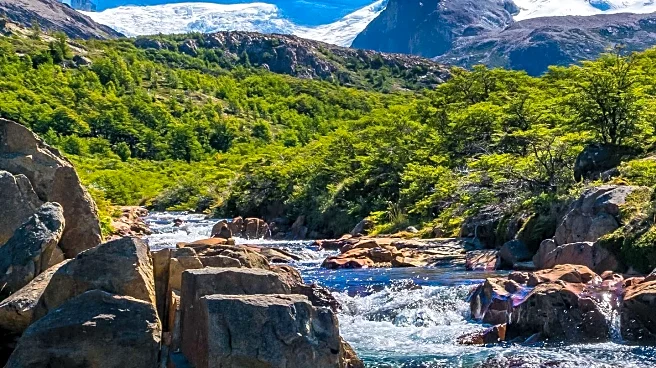What's Happening?
Patagonia, located at the base of South America, spans the lower sections of Argentina and Chile. Known for its surreal landscapes and world-class hiking, the region covers approximately 777,000 square
kilometers in Argentina and 340,000 square kilometers in Chile. Despite its size, Patagonia has a low population density, with about 2 million residents. The region is famous for its national parks, including the Andes, which provide stunning backdrops of mountains, glaciers, and lakes. Patagonia is also a popular jumping-off point for Antarctic voyages due to its proximity to Antarctica.
Why It's Important?
Patagonia's vast wilderness and unique geographical features make it a significant destination for adventure tourism and ecological studies. The region's low population density and remote landscapes offer opportunities for conservation efforts and sustainable tourism practices. The cultural heritage of Patagonia, including indigenous communities and historical influences, provides a rich narrative for travelers interested in exploring the region's history and traditions.
What's Next?
Travelers planning to visit Patagonia should consider the best times to explore its diverse landscapes, with summer being the most favorable season. Understanding the region's cultural and ecological significance can enhance the travel experience. As tourism continues to grow, efforts to preserve Patagonia's natural beauty and cultural heritage will be essential.
Beyond the Headlines
Patagonia's role as a gateway to Antarctica highlights its strategic importance in global ecological studies and conservation efforts. The region's cultural diversity, including indigenous languages and traditions, offers insights into the historical development of South America. Sustainable tourism practices will be crucial in maintaining the ecological balance and cultural integrity of Patagonia.














